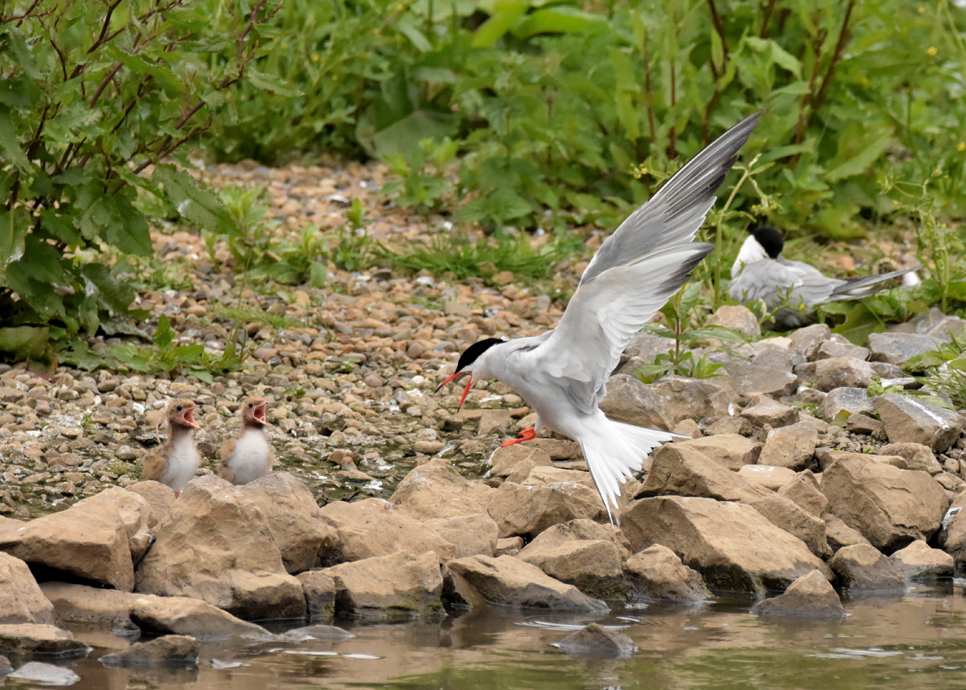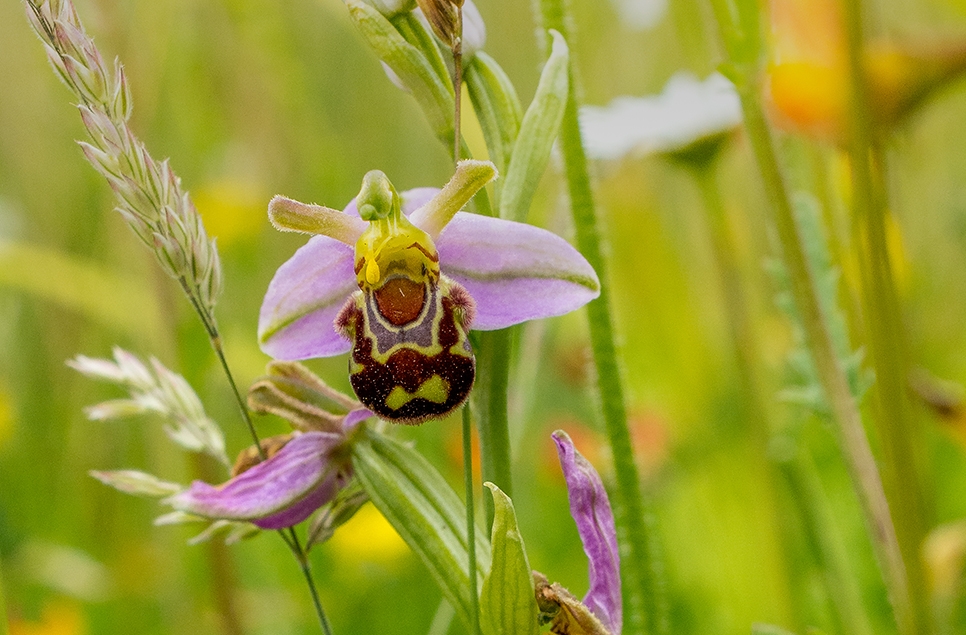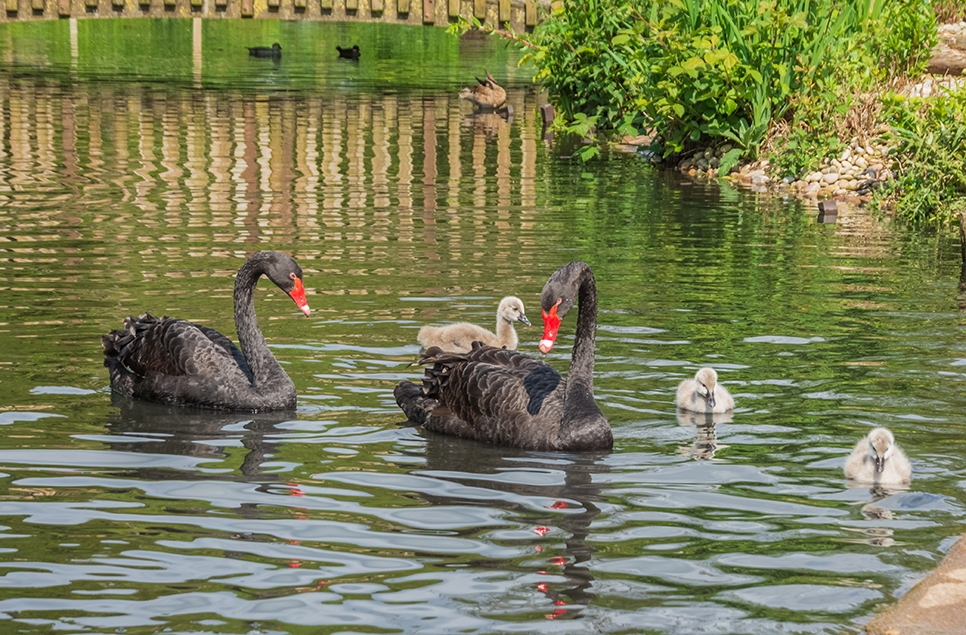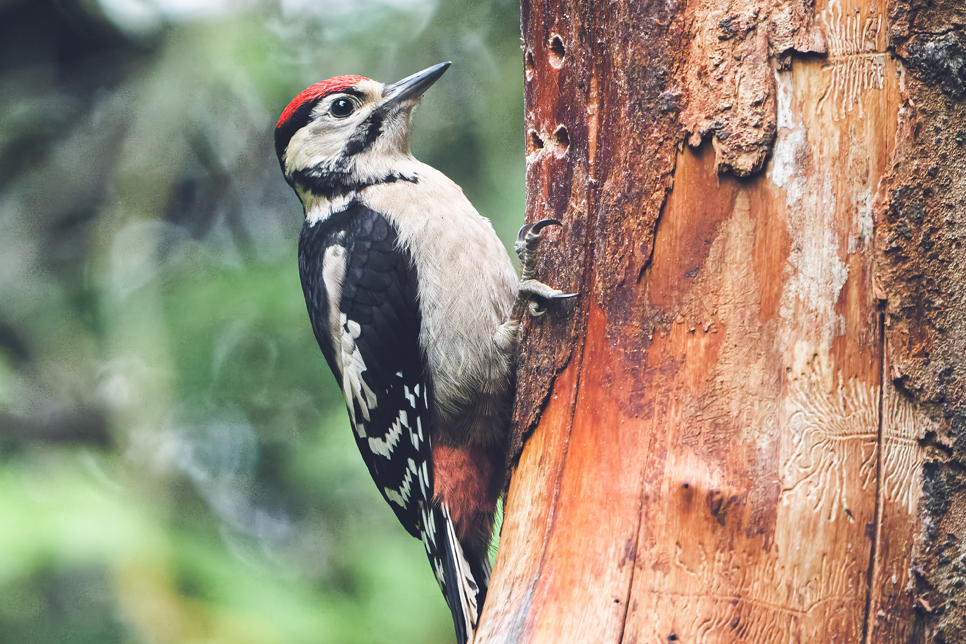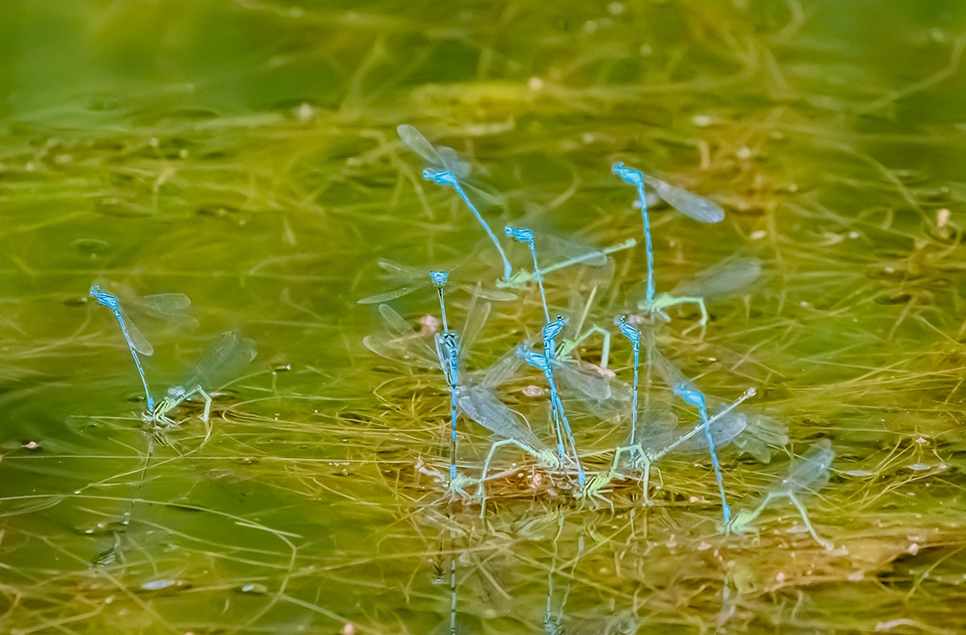Summer photography hints and tips
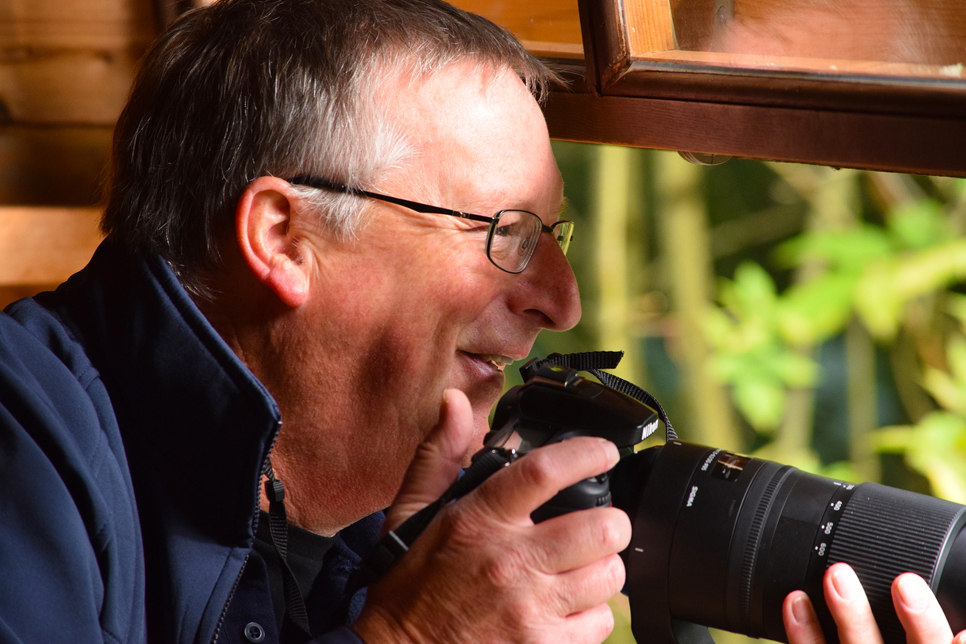
Summer at WWT Washington brings with it so many delights and photographic opportunities throughout the reserve. There is something of interest at almost every turn.
Blog written by volunteer photographer Ian Henderson
It’s difficult to know just where to begin. Young life within the collection and seasonal visitors. Vibrant meadows and woodland surrounding the various lakes, lagoon and riverbank. Clear blue skies offering lots of light for fast shutter speed shots or moody skies to offset the many landscape opportunities. There is also a plethora of plants and a fascination of insects to keep you occupied for hours.
As well as good light levels there are always the sounds and smells of warm summer days to excite your senses as you choose your next composition. From the veritable cacophony of the common terns and black headed gulls on Wader Lake, the murmur of the breeze amongst the reedbeds or the smell of freshly mown meadow hay later in the season.
Most of the sights can be captured successfully on modest camera equipment and mobile ‘phones. For the more ambitious photographer a longer lens (200mm and above) and camera capable of fast shutter speeds over 1/1600th of a second, will be needed to capture the faster moving subjects such as common tern (pictured below) and other birds in flight. I relish the challenge of capturing a shot of a swooping tern with its freshly caught sand eel as it returns from the sea with food for its chicks. With these subjects, I have had most success with a shutter speed of 1/2500th second, wide aperture and ISO on auto. Try and avoid busy backgrounds as they can detract from the subject and make focusing difficult. It’s not easy but success it's so rewarding!
Some words of warning to go with the brightly lit days. Bright sunshine and deeply contrasting shadow can prove difficult to expose correctly, especially with landscape photos. Bear this in mind when composing your shots and adjust your exposure compensation if possible. If your camera is able to bracket exposures by shooting a series of shots at different exposures, it is a good tool to help obtain a more balanced scene. Additionally, it is good to keep a filter handy to help cope with the haze of a very bright day. It will also reduce glare off water and shiny surfaces as well as giving an intensity to your photographs.
Places to watch:
TOP TIP: Make a point of asking at reception for the latest sightings when you arrive at the reserve. There may just be something out of the ordinary on the list or you may be the first to spot a rare visitor! This applies to all seasons.
The reserve in general: As well as the collection birds, Asian short-clawed otters and other wildlife, watch out for unusual plant varieties in the meadows and hedgerows. We have had a good showing of Northern Marsh Orchids and a few bee orchids (pictured above) spotted early in the season.
Forgotten Meadow is particularly vibrant with wildflowers, orchids and grasses. Summer flowers and insects are a great place for macro photography. Although a macro lens is ideal (I use a 105mm f2.8) you can take close-ups of most things with virtually any lens. Use a tripod if possible. If you have access to photo processing software such as Adobe Lightroom or Photoshop, you can use manual focus to take several shots at different focal lengths, front to back of your subject – “focus stacking”) then blend these together in post processing. This gives a greater depth of field.
Close Encounters: New additions of three black swan cygnets (pictured below) this year always make for a great photo. Common eider, smew, falcated ducks and more offer even more photography opportunities.
Reedbed and the reservoir: Water birds and dramatic views across to Penshaw Monument. This is a great spot for landscapes, but avoid the harsh light of the middle of the day.
Hollowood: Woodland birds and many insect varieties.This is a great place just to sit and listen. There is a wide variety of trees and shrubs here, all providing a rich contrast of colour and texture.
Hawthorn wood hide and The Lookout: All manner of woodland birds plus lots of juvenile and recently fledged birds, including bullfinch, tree creeper, nuthatch, great-spotted woodpeckers (pictured below), stock doves, sparrowhawk, jay, wren, blackbird, robin and red-listed willow tit. The list is not exhaustive so be ready for the odd surprise. There are usually a few grey squirrels and the odd pheasant there to clean up whatever the birds drop from the feeders.
TOP TIP: Read our 'IDing juvenile birds in Hawthorn Wood' blog here.
Lagoon view hide: Kestrel, grey heron and redshank are usually around the saline lagoon at this time of year. The river Wear can also be viewed from saline lagoon hide and at high tide, the river breaches into the lagoon.
River Wear: As well as the lagoon view hide, the river viewpoint and Window on the Wear offers great views of the river. A wide variety of wildlife used the river as a nature corridor and for feeding throughout the day. Goosander, little grebe, oystercatcher, redshank, cormorant and even a buzzard are on my ticked list. If you are lucky, you may spot wild otters and even a seal.
Wader Lake: Avocet and common tern are the star species throughout the summer months. Other species include grey heron, lapwing, greylag and canada geese. Shelduck, gadwall, oystercatcher and shoveler have had some breeding success so far on the lake and are busy with youngsters - a great opportunity to photograph them as they learn to feed, while the adults defend their young. Later in the summer, black-tailed godwit, The lake regularly hosts a variety of gulls too with black-headed gull, herring gull, lesser and greater black-back gull. Common gull have been a little more frequent so far this season too.
TOP TIP: Don’t forget to drop your gaze to the reeds and undergrowth in front and to sides of each hide. At this time of year, these habitats are popular with young families of coot, lapwing (pictured below), moorhen, mallard and avocet, feeding on the mud and using the vegetation cover to avoid detection.
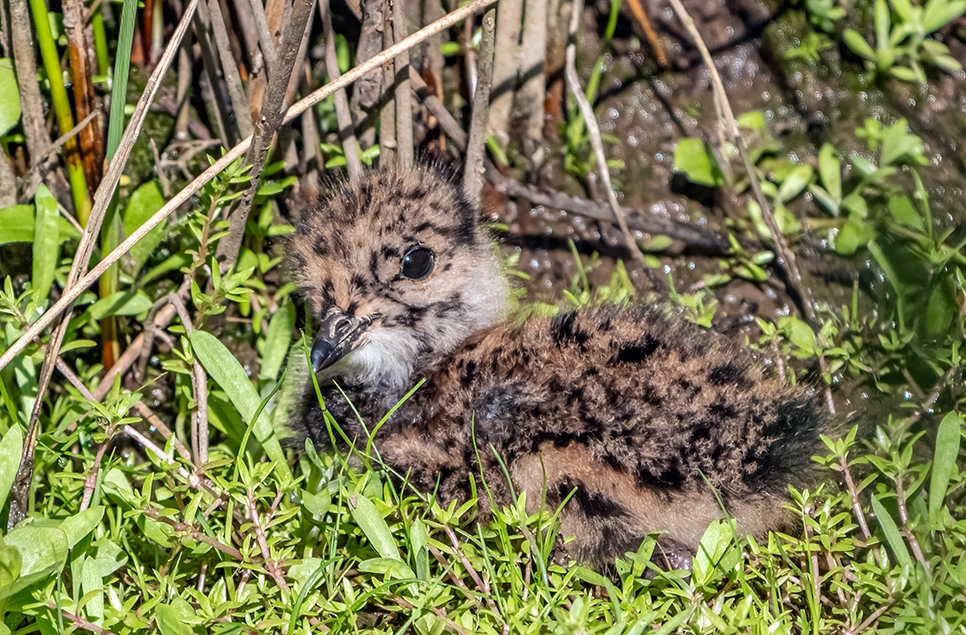
There are three excellent hides along Wader Lake offering ideal vantage points for photography. A fairly standard zoom will allow you to capture birds in their general setting. My favourite lens for this is my 27 – 157mm equivalent. If, on the other hand, you want to get close ups of individual birds you will need something with greater magnification. You will most likely need a focal length of 300mm as a minimum, up to and beyond 900mm equivalent. My choice for this is now a 200 – 800mm equivalent focal length zoom lens which covers me for all but the more distant shots. With the longer focal lengths you should comfortably be able to photograph the avocet (pictured below), common terns and black headed gulls with their chicks on the main island and with good technique, other birds out on the water.
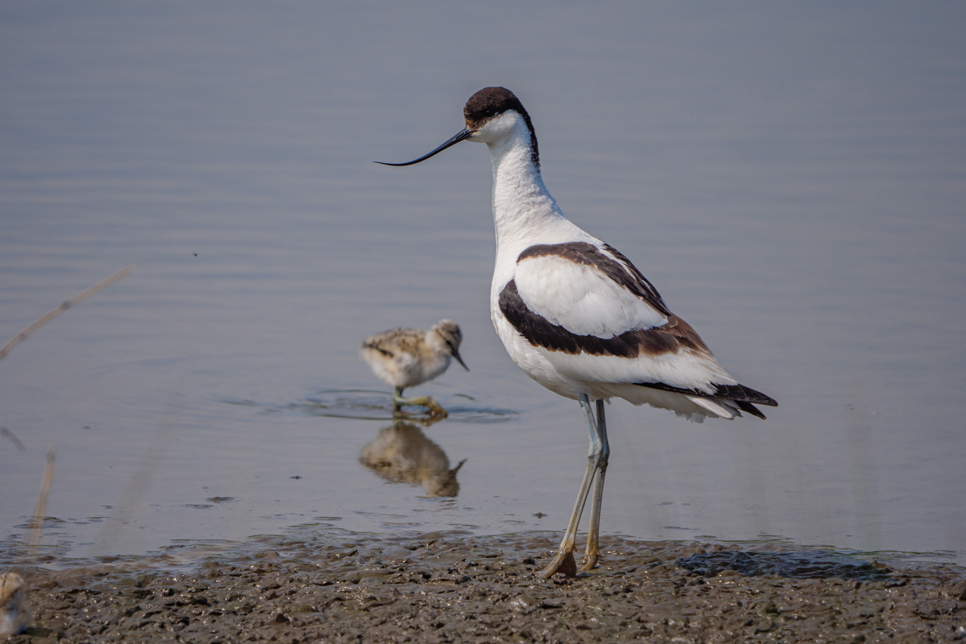
Wader Lake Footpath: Chiffchaf, blackcap, robin, goldfinch, bullfinch and occasionally willow tits can be seen along the shrubs and trees of the footpath. They can often be heard before being seen but it's worth the wait when you spot them.
Amphibian and dragonfly ponds: With the warmer weather this area of the reserve really comes to life. There is an abundance of dragonflies of many varieties. The darters and chasers are often challenging to photograph as they zip about the ponds in random directions. If you're lucky, they may settle on a reed for a few brief moments. When photographed well the “veined” wing detail is beautiful. The damselflies (pictured below) are easier to capture and are beautifully coloured with bright neon blues and reds.
Occasionally, you may see something settle close enough and for long enough to get a pleasing picture with a shorter zoom or fixed (prime) lens. More often than not these elusive insects will need a much longer zoom lens to capture sufficient detail as they are frequently too far away for the shorter focal lengths. The larger chasers and darters often frustrate you with their unwillingness to stay still enough to allow a good shot. When they do settle, it's often at a fair distance. For these opportunities I use as wide an aperture as I can with a fast shutter speed (1/1600+) to reduce the effect of any camera shake.
Sometimes it helps to study the behaviour of the larger species just won’t settle, they often repeat their pattern of flight and pass the same place on each lap. When this happens, it is worth manually pre-focusing on a spot that they regularly pass, then crack off several shots as it passes the next time. A narrower aperture here, fast shutter speed and a good helping of luck can increase the chances of an in-focus shot. Good luck!
Ready to visit?
If you've been inspired to explore Washington Wetland Centre, find out more and plan your visit online.
Plan your visit